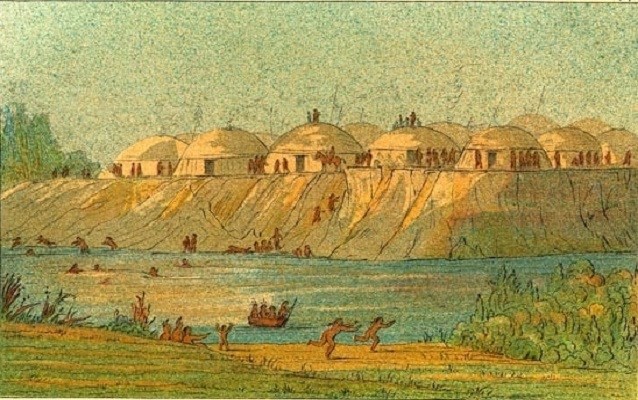Last updated: September 19, 2022
Article
Big Hidatasa Village Site

The Big Hidatsa Village Site is part of the Knife River Indian Villages National Historic Site. Settled from 1740 until about 1850, Big Hidatsa Village is the largest of the Hidatsa communities near the Knife River. It was comprised of approximately 120 circular earth lodges that housed 20 to 30 individuals each. They were set close together, allowing for communal interaction among the inhabitants.
The Mandan and Hidatsa were often approached by those interested in developing trade networks, so they were receptive to the Corps of Discovery in the winter of 1804. With the winter fast approaching, the Corps quickly constructed lodging made from those materials they could find. Fort Mandan was erected approximately 2 miles south of the Big Hidatsa Village.
Over the following months the Corps entertained visitors, and hunted and traded when necessary. They prepared a shipment for President Jefferson, some of which the President sent to the American Philosophical Society. Cages contained a live prairie dog, a sharp-tailed grouse and four magpies. Boxes and trunks held pelts, horns and skeletons of various animals, dried plant, soil, mineral and insect specimens. Mandan and Hidatsa artifacts were also packed, along with letters, reports, dispatches and maps.
Lewis and Clark recruited new members to the Corps, replacing those who carried the shipments. The most notable additions were Charbonneau and his Shoshone wife, Sacagawea, who joined the Expedition in the spring of 1805. Valuable interpreters, they both would play integral roles in the future success of the mission.
The Lewis and Clark Expedition, departing from Big Hidatsa Village on April 7, 1805. Uncharted, the land to the west was a mystery, a source of a number of challenges to come for the Corps of Discovery.
